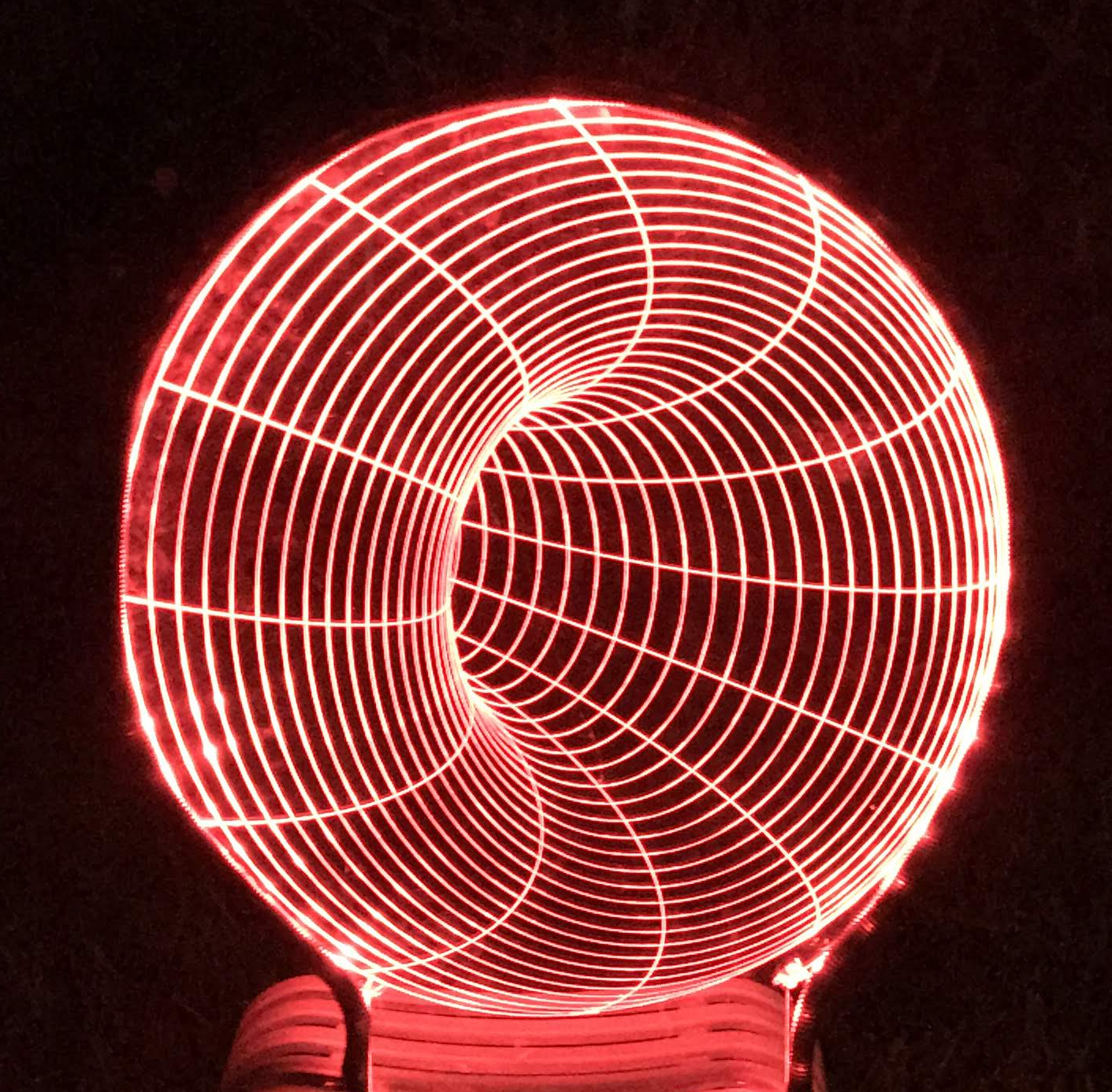I got a question about the acrylic light vortex and thought I'd create a log about it's creation. I was originally inspired by the signs that are in the hackerspace Noisebridge in San Francisco. They have an LED strip at the top, and acrylic is etched so that letters and shapes are illuminated. It looks great at night. I wanted to combine that effect with an optical illusion and thought of a vortex mesh shape.
I created some code in python to create a vortex which you can see here. Once I'd created the shape, and imported it into inkscape, I realised that the vortex shape had hidden surfaces which would make it not work with the laser cutter! Hidden Surface Removal turns out to be this classic problem when dealing with meshes in computational geometry. I happen to have two good friends who work professionally in the field of computational geometry, and they helped me with the code to remove the hidden surfaces. That's the story of the shape and how it came to be.
File types. Python goes to svg, open in inkscape to save as an .EPS format, then use the plugin pstoedit to finally convert to a dxf ready for the laser cutter. Phew! Wow. Anyway, it all works and is all using open source.
I then went to Tap Plastics, got a big sheet of acrylic and walked back to laser cut the design on the Kaitian CM1309. The LED light strip I used is really awesome and pretty cheap - Here is a link. I was pretty happy with how it turned out and would consider doing this process of doing any shape with python, then converting to a dxf for the laser cutter again.

 jean
jean
Discussions
Become a Hackaday.io Member
Create an account to leave a comment. Already have an account? Log In.